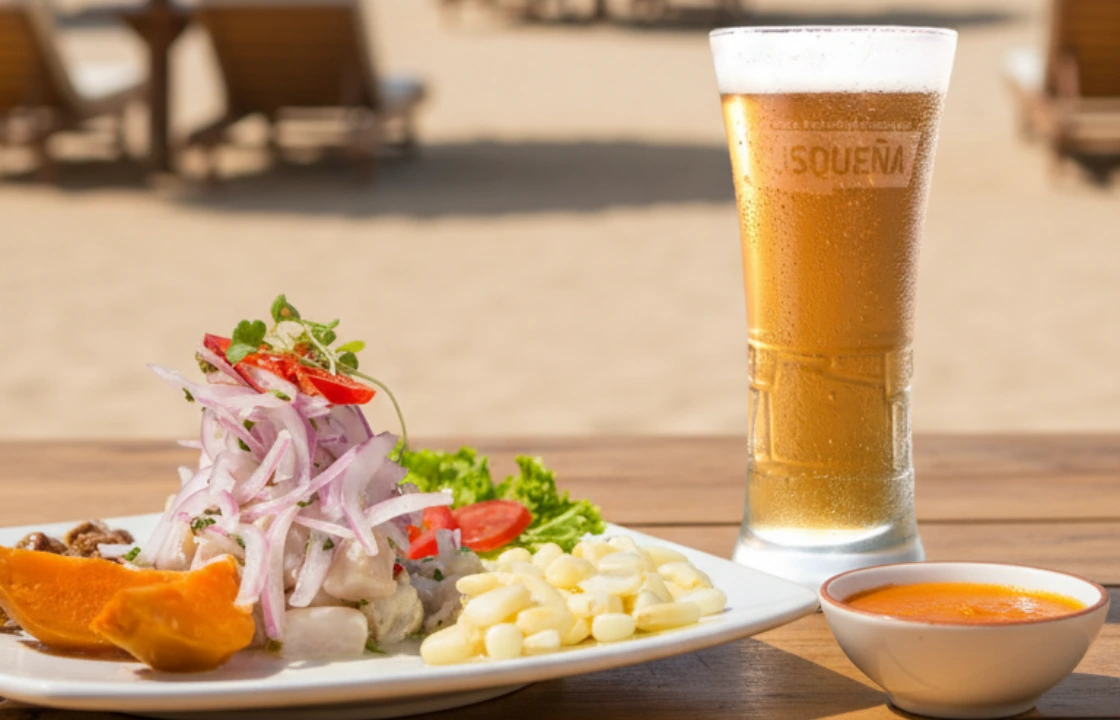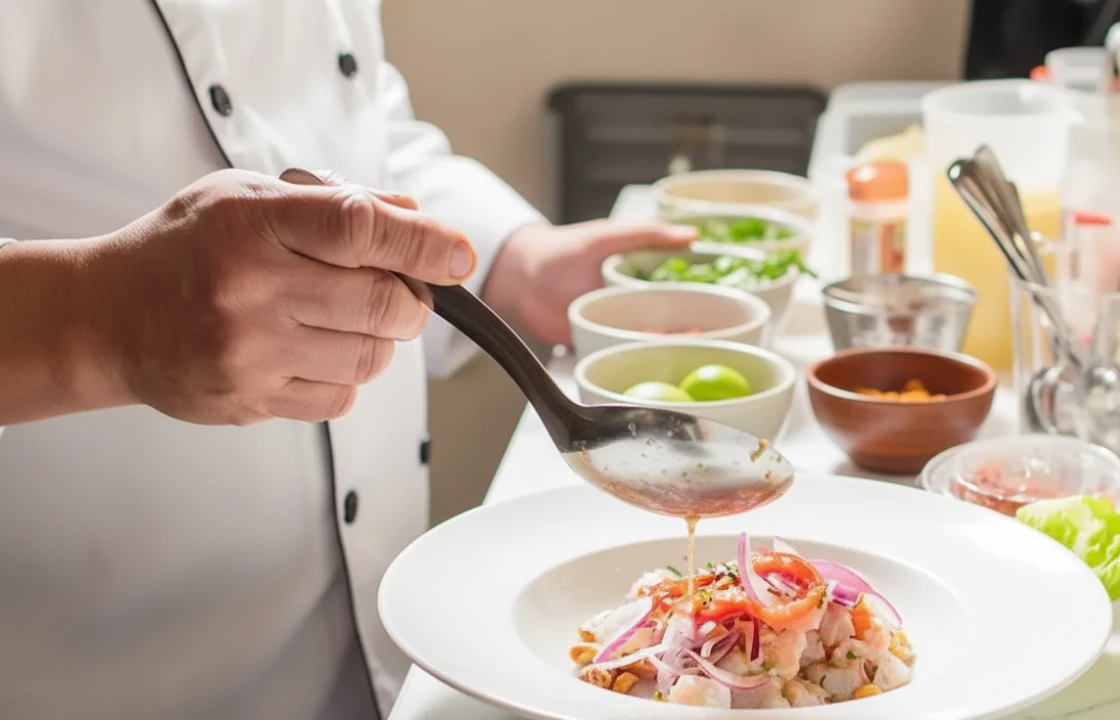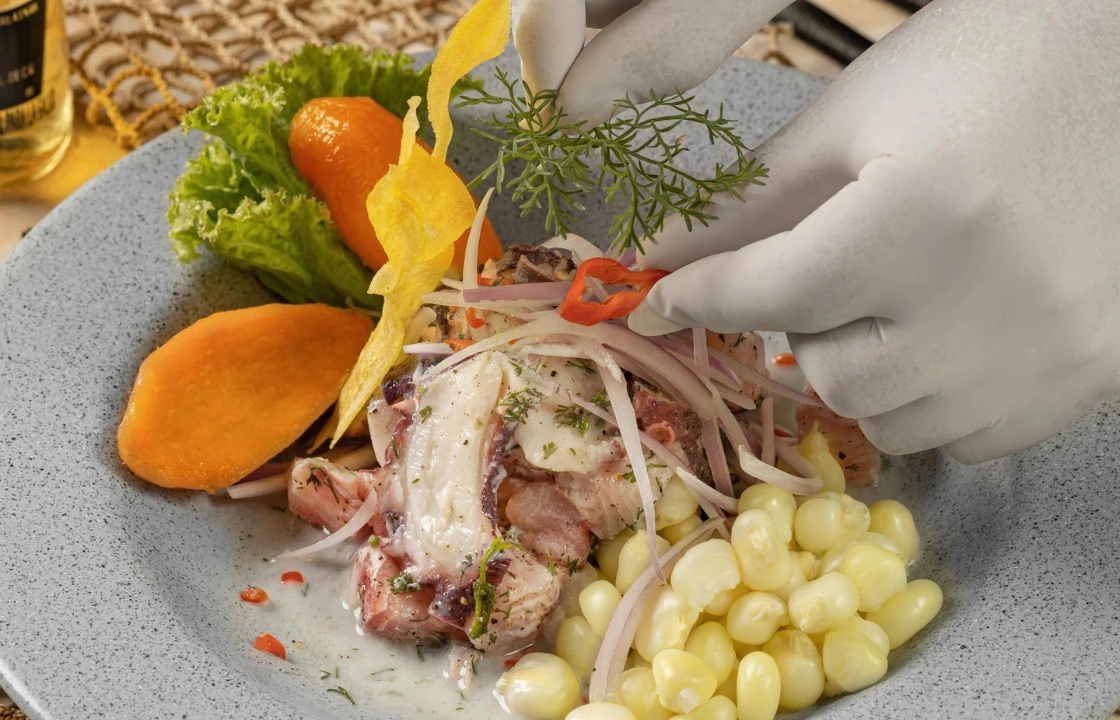What Is Ceviche and Why It Matters
Hello, dear reader! If there’s one dish that defines Peru, it’s ceviche.
Fresh, tangy, and full of flavor, this seafood dish is more than just a meal — it’s part of Peru’s national identity. Whether you’ve searched “ceviche near me”, “ceviche recipe”, “what is ceviche”, or “is ceviche healthy”, you’re about to discover the real story behind Peruvian ceviche, the version that started it all.
Across Latin America (Chile, Colombia, Costa Rica, Ecuador, Nicaragua, and Panama) you’ll find local versions of ceviche. But only in Peru has this dish become an art form, declared a National Cultural Heritage and celebrated every June 28th, the National Day of Ceviche.
Ceviche Peru: The Heart of Peruvian Cuisine
Where is Ceviche from?
Although ceviche is enjoyed across Latin America, historians and chefs agree that Peruvian ceviche is the most traditional and influential version. Ancient coastal civilizations were already marinating fish with local fruits and spices long before the arrival of citrus fruits from Europe.
When the Spanish brought limes to South America, Peruvians perfected the mix — creating the bright, citrusy ceviche the world now loves.
Peruvian Ceviche Recipe: The Classic Way
So, how do you make ceviche? Here’s how to prepare the authentic Peruvian ceviche recipe, step by step.
Ingredients (Ceviche Ingredients you Need)
- 500 grams of fresh white fish (commonly corvina, sea bass, or sole)
- 1 cup of fresh lime juice
- 1 red onion, thinly sliced
- 1 ají limo or ají amarillo, finely chopped
- 1 sprig of cilantro (culantro), chopped
- Salt and pepper to taste
- 1 sweet potato (camote), boiled and sliced
- Peruvian corn (choclo), boiled and kernels removed
- Toasted corn (cancha), for garnish
How to make Peruvian Ceviche
- Cut the fish into small cubes (about 1–2 cm). Keep it fresh and cold.
- Season with salt and pepper, then pour the lime juice over it until fully covered.
- Let it marinate for 10–15 minutes, depending on how “cooked” you like it.
- Add the onion and chili, and mix gently.
- Sprinkle chopped cilantro just before serving.
- Serve immediately with sweet potato, choclo, and cancha: the traditional Peruvian ceviche dish.
What 5 Ingredients are included in Traditional Peruvian Ceviche?
Although there are many versions, the heart of traditional Peruvian ceviche lies in five simple ingredients:
- Fresh white fish
- Lime juice
- Red onion
- Ají limo or ají amarillo
- Cilantro
Everything else, the sweet potato, corn, and cancha, are the perfect Peruvian sides that complete the experience.
Fish for Ceviche: Choosing the Right One
The secret to perfect ceviche lies in the fish.
The best fish for ceviche is firm, white, and fresh — varieties like corvina, sea bass, grouper, or sole. These hold their texture during marination and absorb the lime flavor beautifully.
If you’re near the coast, always buy the catch of the day. The fresher, the better — ceviche doesn’t forgive old fish!
Is Ceviche healthy?
Yes, ceviche is incredibly healthy.
It’s low in fat, high in protein, rich in omega-3, and full of vitamin C from the lime. It’s gluten-free, dairy-free, and naturally light — one of the few dishes that’s both indulgent and nutritious at the same time.
How much does Ceviche cost in Peru?
In Peru, ceviche is for everyone.
You can enjoy a plate of fresh ceviche peruano at a local market for around 10–25 soles ($3–7 USD), or at an upscale ceviche bar for 50–60 soles ($13–15 USD). Either way, the taste of lime, chili, and sea will stay with you long after your trip.
Why is Ceviche important to Peru?
Ceviche represents everything Peru stands for: diversity, creativity, and passion.
It’s a dish that unites coast, Andes, and jungle. It tells the story of migration, fusion, and national pride. To Peruvians, ceviche isn’t just food — it’s a reason to celebrate, share, and remember who they are.
Mexican Ceviche vs. Peruvian Ceviche
People often compare Mexican ceviche with Peruvian ceviche.
The Mexican version usually includes tomatoes, avocado, and shrimp, while the Peruvian one focuses on the pure, minimalist blend of lime, chili, and fish. Both are delicious — but only one was born on the Pacific coast of Peru.
FAQs About Ceviche
What is ceviche?
Ceviche is a dish made of raw fish marinated in lime juice, mixed with chili, onion, and cilantro. The acid “cooks” the fish naturally.
How do you make ceviche?
You make ceviche by cutting fresh fish, seasoning it, and marinating it in lime juice for a few minutes. Add onion, chili, and cilantro before serving.
What 5 ingredients are included in traditional Peruvian ceviche?
Fresh white fish, lime juice, red onion, ají chili, and cilantro.
Is ceviche Peruvian?
Yes. Ceviche is deeply rooted in Peruvian culture and recognized as the country’s national dish.
Is ceviche healthy?
Definitely! It’s rich in protein, low in calories, and full of nutrients.
Where is ceviche from?
Ceviche originated on the coast of Peru but spread across Latin America, with versions in Chile, Ecuador, and Central America.
How much does ceviche cost in Peru?
It varies from $3–7 USD in local spots to $15 USD in high-end restaurants.
What’s the best fish for ceviche?
White, firm fish like corvina, sea bass, or sole — always fresh!
When is the National Day of Ceviche?
Every June 28th, Peru celebrates its most famous dish nationwide.
How to make Peruvian ceviche at home?
Follow the traditional recipe: fresh fish, lime, onion, chili, cilantro, and a side of sweet potato and corn.
Experience Ceviche in Peru!
You can try making it at home, but the real magic happens in Peru! tasting it fresh by the Pacific Ocean, with sea breeze, lime, and sunshine.
Travel with Peruvian Sunrise and experience the true taste of Peru, from local markets to world-famous restaurants, where ceviche tells the story of a nation through flavor.
Plan your trip now and enjoy the world’s best ceviche, where it all began.



